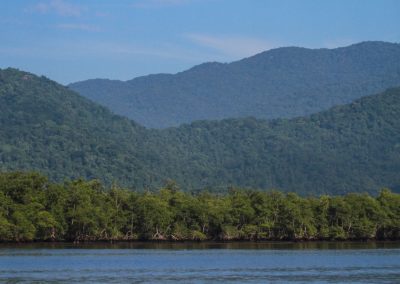Adriatic-Ionian Transboundary Conservation
Background
Scenarios
We also analyzed scenarios with the proportional protection equality (PEP) metric (Chauvenet et al. 2017). Proportional protection equality evaluates how equally represented features are in a conservation. We calculated PEP based on the proportion of AIR countries’ jurisdiction and the distribution of each maritime industry captured in solutions for each scenario.
sdfgsdg
sdfgsdg
sdfgsdg
sdfgsdg
sdfgsdg


Influence of Regional Versus National Target Setting
Priority areas for conservation
The distribution of priority areas for conservation (i.e., the planning units with highest selection frequency) varied significantly across our 4 scenarios (Fig. 1). When cost was assigned as the area of the planning units, regardless of the target‐setting strategy, solutions were very flexible, with almost 98% of the AIR included at some point (Figs. 1a & 1c). When we accounted for industries operating in the AIR by including them as a cost (scenario 1b, 2b), the resulting solutions became more spatially decisive and 25% of the AIR was never selected (Figs. 1b & 1d). When we accounted for industry costs, the results identified priority areas around the presence of spatially constrained biodiversity features. These areas include the central areas of the Northern Adriatic, where Mullus barbatus (red mullet) spawn; the central Adriatic between Italy and Croatia, where Eledone cirrhosa are preferentially present (horned octopus) and Nephrops norvegicus (Norway lobster) spawn; the coastal areas of Albania, where Aristaeomorpha foliacea (giant red shrimp) spawn and recruitment occurs and Galeus melastomus (blackmouth catshark) recruitment occurs; and the coastal areas of Greece, where monk seals, whales, and turtles nesting sites occur and Raja clavata (thornback ray) spawn.
Trade-offs need to be made explicit

References:
References
Contact Information:

Elena Gissi
Senior researcher, Marie Sklodowska Curie Fellow, National Research Council, Institute of Marine Sciences, Venice, Italy, and Stanford University, Hopkins Marine Station, USA








